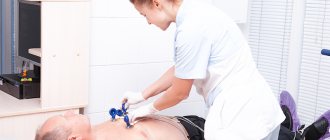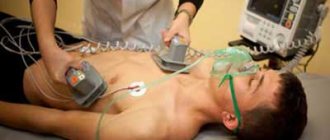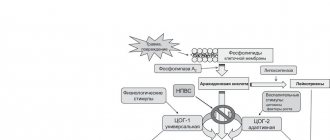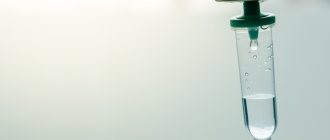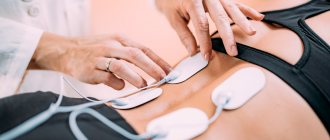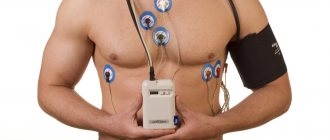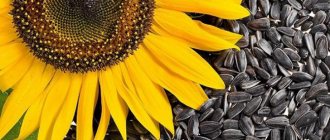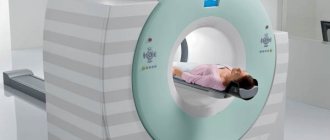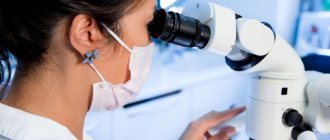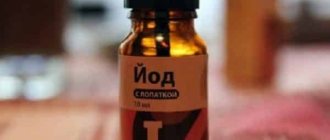Hypertension disrupts the functioning of the heart muscle, constricts blood vessels, and causes stagnation in the pulmonary and systemic circulation. Massage to lower blood pressure helps to cope with such phenomena, restoring the nervous system, normalizing blood circulation and relieving stress. This treatment is not only highly effective, but also maximum safety, practically does not cause adverse reactions and does not disrupt the functioning of other organs and systems.
You can do massage not only in a massage parlour, but also at home, which allows you to use it as a method of emergency treatment of the body during a hypertensive attack.
Scalp massage for high blood pressure
Head massage for hypertension is performed as follows (including in the video below):
| Patient position | Types of massage techniques | How to do it |
| Lying on your stomach, head resting on your hands folded in front of you | Stroking | Using the pads of your fingers, stroking movements are made from the crown to the back of the head, then from the crown to the temples, from the crown to the forehead |
| Trituration | Using the fingertips, rubbing movements are made from the forehead to the neck. At first, rubbing is done in zigzags, then in circles, then in beak-shaped | |
| On the back, under the head there is a cushion | Stroking | Using finger pads, stroke from the center of the forehead to the temples |
| Trituration | From the forehead to the temples, rubbing is carried out in zigzag, then circular lines. | |
| Tingling | Light tingling from the center of the forehead along the hairline towards the temples | |
| Stroking | Again you need to make light strokes along the same trajectory as before |
Absolute contraindications
If there are contraindications from the list below, massage is harmful, as it increases blood circulation and lymph flow, which will only harm the body
Massage taboo:
- — Flu, ARVI, tonsillitis, any acute inflammatory processes
- — Blood diseases, internal bleeding
- — Malignant neoplasms and tumors
- — Purulent processes of any localization
- — Scurvy
- — Osteomyelitis
- — Complicated forms of varicose veins: thrombosis, thrombophlebitis and trophic ulcers, any acute inflammation of blood and lymphatic vessels
- — Aneurysm of the aorta and heart, acute myocardial ischemia
- — Pulmonary heart failure of the third degree
- — Hyper- and hypotonic crisis
- — Diseases of the abdominal organs with a tendency to bleeding
- — Active form of tuberculosis
- — Kidney and liver failure
- - Venereal diseases
- - Mental illness with excessive agitation and significantly altered psyche.
More detailed information is in the following video:
Massage of the collar area for high blood pressure
Massage of the collar area for hypertension is performed in a sitting position. The massage therapist's fingers do not apply strong, but light pressure, moving only from top to bottom (in the direction of blood outflow from the cranial cavity). The stages of this massage for hypertension are as follows (including watch the video):
- Superficial light stroking with palms, directed from the ears, along the back of the neck, to the middle of the shoulder blades, and then upward, to the lymph nodes under the chin.
- Deep (that is, with pressure) stroking along the trajectory described in point 1. The hands do not leave the body.
- Trituration. First one, then the second part of the back is rubbed from the shoulders to the lower corners of the shoulder blades.
- Deep stroking is performed from the shoulders to the bottom of the shoulder blades.
- From the shoulders to the shoulder blades, rubbing is done in a spiral.
- Sawing is performed along the same trajectory: with the edge of the hand, which is a continuation of the little finger, sawing movements are performed back and forth with one or two hands. In this case, the tissues shift and stretch.
- Light stroking in the same trajectory.
Prevention of cervical osteochondrosis
In addition to physical activity and diet, the following tips are valuable for preventing symptoms of cervical osteochondrosis:
- equip your workplace in accordance with ergonomic standards (for example, use chairs with neck support and armrests);
- during the working day, do a warm-up every hour;
- try to sleep on low pillows and orthopedic or moderately hard mattresses without sagging;
- walk more, do yoga;
- monitor your body weight;
- carefully dose the loads, avoid traumatic activities;
- from time to time take preventive courses of massage of the cervical-collar area;
- try not to hold your head in an unnatural position for a long time (for example, pressing the phone to your ear);
- use comfortable backpacks and bags without distortion;
- correct your posture;
- give up bad habits;
- treat infectious diseases and injuries in a timely manner;
- annually take a 2-4 month course of the chondroprotector Artracam.
Massage of the shoulder girdles (shoulders) for hypertension
The massage is performed in a sitting position. Both hands of the massage therapist are involved, with which he performs actions in the following sequence:
- spiral rubbing of the shoulder joints;
- rubbing, in which spirals are “written out” with your hands. They are carried out from the back of the shoulders to the auricle;
- rubbing in straight lines, running from the neck to the shoulder joints;
- sawing, which is carried out from the neck to the shoulder joints;
- kneading areas from the neck to the shoulder joints with pincer-like movements.
Neck massage along the front surface at high pressure
The patient sits on a chair, the massage therapist stands behind him and performs:
- stroking with palms from the chin to the collarbones and armpits;
- slight tingling of the muscle running from the ear to the collarbone;
- lightly stroking the front of the neck.
With the same movements and in the same sequence, a person can perform self-massage for hypertension.
You can help yourself with hypertension by performing a back massage. To do this, lie on your stomach and place a rolled-up blanket under your feet so that your shins are at an angle of 45-100 degrees. Turn your head as comfortably as possible.
Now use your hands to stroke your back from the pelvis to the neck 7 times. Kneading is then performed in the same direction, which is also performed seven times.
Now proceed to self-massage of the collar area. It is first stroked, then “squeezed” with the pads of the fingers, without touching the neck area, and rubbed in straight lines using the thumbs.
Symptoms of cervical osteochondrosis in men
Symptoms of cervical osteochondrosis in men usually appear at the age of 40-45 years. Patients often notice them during physical activity (for example, working out in the gym or lifting weights). Delayed self-diagnosis of symptoms of cervical osteochondrosis in men is associated not only with a reluctance to go to the doctor, but also with physiological prerequisites. Men have stronger and thicker vertebrae than women, and the vessels are stronger. Therefore, they may notice discomfort only when changes have already affected the intervertebral discs. Characteristic symptoms of cervical osteochondrosis in men include:
- decreased overall strength and endurance;
- deterioration of libido and erectile dysfunction;
- irritability, sometimes neuroses;
- deterioration of motor skills (“awkward fingers”);
- headaches that do not go away after taking analgesics.
Vertebral hernias with symptoms of cervical osteochondrosis are more common in men than in women.
Acupressure for high blood pressure
Acupressure for hypertension can be effective in reducing blood pressure to some extent. It is based on the communication of some vibration to biologically active points, which can be located symmetrically on the body, or can be in a single copy. In the first case, the points are massaged simultaneously, using two index fingers; if there is only one point, only that is massaged. Circular movements are made clockwise.
At the beginning of the massage and at the end, the pressure on the point is less than in the middle. Massage duration is 3-5 minutes. During this procedure, breathing is smooth, calm, and the body is relaxed. To treat hypertension and high blood pressure, the following points are used for massage (see picture):
- Symmetrical point tzu-san-li (massaged on two legs). It can be found in the depression, which is located 4 fingers below the kneecap, if they are positioned transversely (point 1 in the figure) and outward from the edge of the tibia by the width of one finger. Massage for 5 minutes.
- 2 symmetrical points: between the 1st and 2nd toes, between the 2nd and 3rd toes. Massage time – 5 minutes (points 2 and 3 in the picture).
- Symmetrical point. It is found 4 transverse fingers above the inner ankle of the foot (see picture - point 4).
- Symmetrical point. Spread your thumb and index finger apart. The point is located in the resulting space, between two bones (point 5 in the picture).
- Asymmetrical point. It is located at the intersection of the line running along the middle of the head and the one that connects the upper parts of the ears (point 6 in the picture). Massage for 3 minutes.
Massage at the cellular level at home
For hypertension, massage using the medical method of phonation is especially effective by transferring microvibration energy into the body. This method affects the blood supply and lymph flow of a certain area of the body, affecting the tone of blood vessels and the speed of blood flow through them, activating nerve receptors located in the skin and deeper tissues, thereby:
- improving cell nutrition and oxygen supply;
- promoting metabolism and biochemical reactions that enable life to exist;
- accelerating the cleansing of tissues from dead cells and decay products (poisons, waste);
- providing cell regeneration (restoration).
Phonation is carried out by a special medical device Vitafon, developed in 1992 by Russian physicist V.A. Fedorov.
Considering the mechanics of the device, we can say that it produces massage at the cellular level up to 10 cm deep inside the body. This vibroacoustic massage can be performed independently and at home.
The effectiveness and safety of this medical method, unlike other types of massage, is confirmed by numerous scientific studies and clinical practice.
You can read more about this here.
To summarize, we can say that a positive answer to the question “is it possible to do massage with high blood pressure and hypertension?” will only be a correctly performed medical massage with a focus on the patient’s sensations during its implementation. If, during the process of manual massage, excessive efforts cause damage to the tissues of the body, this can lead to narrowing of the arteries, and accordingly, after the massage, the pressure may rise, since the body cannot allow the blood supply to the brain to deteriorate.
List of used literature:
- Dubrovsky V.I. Massotherapy. Practical guide. – M, GEOTAR-MED, 2005.
- Shapkin V.I. Reflexology: a practical guide for doctors. – M, GEOTAR-MED, 2015.
- Schnorrenberger Klaus K. Acupuncture therapy, 2012.
- Ivanichev G.A. Manual medicine. – M, MEDpress-inform, 2003.
Author of the article: intensive care physician M.S. Krivega (Regional Infectious Diseases Clinical Hospital, Zaporozhye)
You can ask questions (below) on the topic of the article and we will try to answer them competently!
Features of the procedure
The course may include 10-15 sessions every 2-3 days. If the massage is performed for medical reasons, the doctor will adjust the duration of the course depending on the patient’s well-being.
The massage procedure has several features:
- Not only the professionalism of the massage therapist is important, but also a relaxing environment . Therefore, the room should have a comfortable temperature and pleasant music. Some massage therapists use incense.
- The massage is carried out using oils and creams, which also have a certain effect . For example, lavender in the composition relaxes, peach oil improves skin elasticity, etc.
- The duration of one session is approximately 30 minutes . For a child, the massage should last no more than 15 minutes.
- The specialist is obliged to pay attention to the patient's requests and comments . The procedure should not cause severe pain or discomfort.
- After finishing the massage, you need to get up very smoothly , slowly, without making sudden movements.
It is very important to contact a trusted specialist who knows how to massage a specific area and how hard to apply pressure to the skin and muscles. If the massage was done incorrectly or unprofessionally, migraines may appear or worsen, chronic diseases may worsen, or a sharp increase in blood pressure (hypertensive crisis).
Sometimes a massage therapist, in addition to oil and cream, uses additional products, for example, sea salt. It helps remove edema, reduces the manifestations of osteochondrosis, and breaks down fatty deposits. But you should not use even fine salt for people who have very thin or sensitive skin. This will lead to burning and irritation.
Also, natural honey is often used during massage if the client is not allergic to bee products. Honey improves the condition of the skin, has a good lifting effect, removes excess fluid and toxins, softens, and improves lymph flow. But in its pure form, honey is not applied to the skin; it will stick to your hands and interfere with stroking. It is heated a little to make it more liquid, and then mixed with butter or cream.
